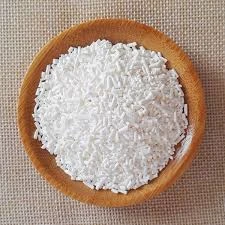
Comprehensive Guide to Common Flavor Enhancers and Their Uses
A Comprehensive Guide to Flavor Enhancers Transforming Your Culinary Experience
Flavor enhancers are an essential component in modern cooking, playing a crucial role in elevating the taste and overall sensory experience of food. These substances can amplify existing flavors, add depth, and create a more appealing taste profile. With the ever-growing demand for flavor in the culinary world, understanding the different types of flavor enhancers and their uses is vital for both professional chefs and home cooks.
What are Flavor Enhancers?
Flavor enhancers are additives that boost the perception of taste and aroma in food without contributing a significant flavor of their own. They work by intensifying the natural flavors present in ingredients, making dishes more enjoyable and satisfying. The most well-known example of a flavor enhancer is monosodium glutamate (MSG), but there are numerous others, each with unique properties and applications.
Different Types of Flavor Enhancers
1. Monosodium Glutamate (MSG) Perhaps the most famous flavor enhancer, MSG is widely used in Asian cuisine and processed foods. It provides a savory taste known as umami, which complements meats, vegetables, and soups, enhancing their overall flavor without overpowering them.
2. Yeast Extracts These are derived from yeast and offer a rich source of umami as well. Yeast extracts are often found in bouillons, sauces, and processed foods. They not only enhance flavor but can also provide a nutritional boost, as they contain B vitamins and other micronutrients.
3. Hydrolyzed Vegetable Proteins (HVP) HVP is created by breaking down vegetable proteins into their amino acids, resulting in a product that can enhance the flavor of soups, gravies, and snack foods. Similar to MSG, HVP provides umami notes that enrich dishes while also serving as a protein source.
4. Natural Flavor Compounds These are derived from plant or animal sources and encompass a wide range of flavor profiles. From citrus oils to garlic and onion powders, natural flavor compounds can elevate the taste of foods significantly, making them versatile additions to your culinary arsenal.
flavour enhancers list

5. Salt While salt is primarily known as a seasoning, it also acts as a flavor enhancer by intensifying the taste of other ingredients. It can suppress bitterness and amplify sweetness, making it an indispensable tool in cooking.
6. Sweeteners Certain sweeteners, both natural (like honey and maple syrup) and artificial (like aspartame and sucralose), can also enhance perceived flavors. Sweetness can balance out acidity and bitterness, creating a more harmonious flavor profile in a dish.
Applications in Cooking
Flavor enhancers can be utilized in various ways across a myriad of cuisines. In savory dishes, a sprinkle of salt or a dash of MSG can transform the flavor of meats, vegetables, and sauces. In baked goods, the right amount of sweetener can elevate the overall taste, ensuring a perfect balance. Additionally, incorporating natural flavor compounds, such as herbs and spices, can create layers of flavor that intrigue the palate.
Considerations and Controversies
While flavor enhancers can undoubtedly enhance the culinary experience, they are not without controversy. Some individuals have reported sensitivity to MSG and other compounds, leading to health concerns and debates over their safety. It is essential for cooks to be mindful of their audience and consider potential allergies or sensitivities when incorporating these ingredients.
Conclusion
Flavor enhancers are powerful tools in the kitchen, enabling cooks to create delicious and memorable dishes. By understanding the different types available and how to use them effectively, anyone can elevate their culinary creations. Whether you’re a seasoned chef or a home cook, integrating flavor enhancers thoughtfully can open up a world of culinary possibilities, crafting meals that delight and satisfy. So, dive in, experiment, and discover the remarkable impact of flavor enhancers on your cooking journey!
-
Pure Sodium Dichloroisocyanurate Dihydrate | Powerful DisinfectantNewsAug.29,2025
-
Industrial Chemicals: Quality & Purity for Every IndustryNewsAug.28,2025
-
Nitrile Rubber Honoring Strict Production StandardsNewsAug.22,2025
-
Aspartame Ingredients Honoring Food Safety ValuesNewsAug.22,2025
-
Fertilizer for Balanced Plant NutritionNewsAug.22,2025
-
Cyanide Gold Processing with High Purity AdditivesNewsAug.22,2025
-
Formic Acid in Textile Dyeing ApplicationsNewsAug.22,2025
Hebei Tenger Chemical Technology Co., Ltd. focuses on the chemical industry and is committed to the export service of chemical raw materials.
-

view more DiethanolisopropanolamineIn the ever-growing field of chemical solutions, diethanolisopropanolamine (DEIPA) stands out as a versatile and important compound. Due to its unique chemical structure and properties, DEIPA is of interest to various industries including construction, personal care, and agriculture. -

view more TriisopropanolamineTriisopropanolamine (TIPA) alkanol amine substance, is a kind of alcohol amine compound with amino and alcohol hydroxyl, and because of its molecules contains both amino and hydroxyl. -

view more Tetramethyl Thiuram DisulfideTetramethyl thiuram disulfide, also known as TMTD, is a white to light-yellow powder with a distinct sulfur-like odor. It is soluble in organic solvents such as benzene, acetone, and ethyl acetate, making it highly versatile for use in different formulations. TMTD is known for its excellent vulcanization acceleration properties, which makes it a key ingredient in the production of rubber products. Additionally, it acts as an effective fungicide and bactericide, making it valuable in agricultural applications. Its high purity and stability ensure consistent performance, making it a preferred choice for manufacturers across various industries.





